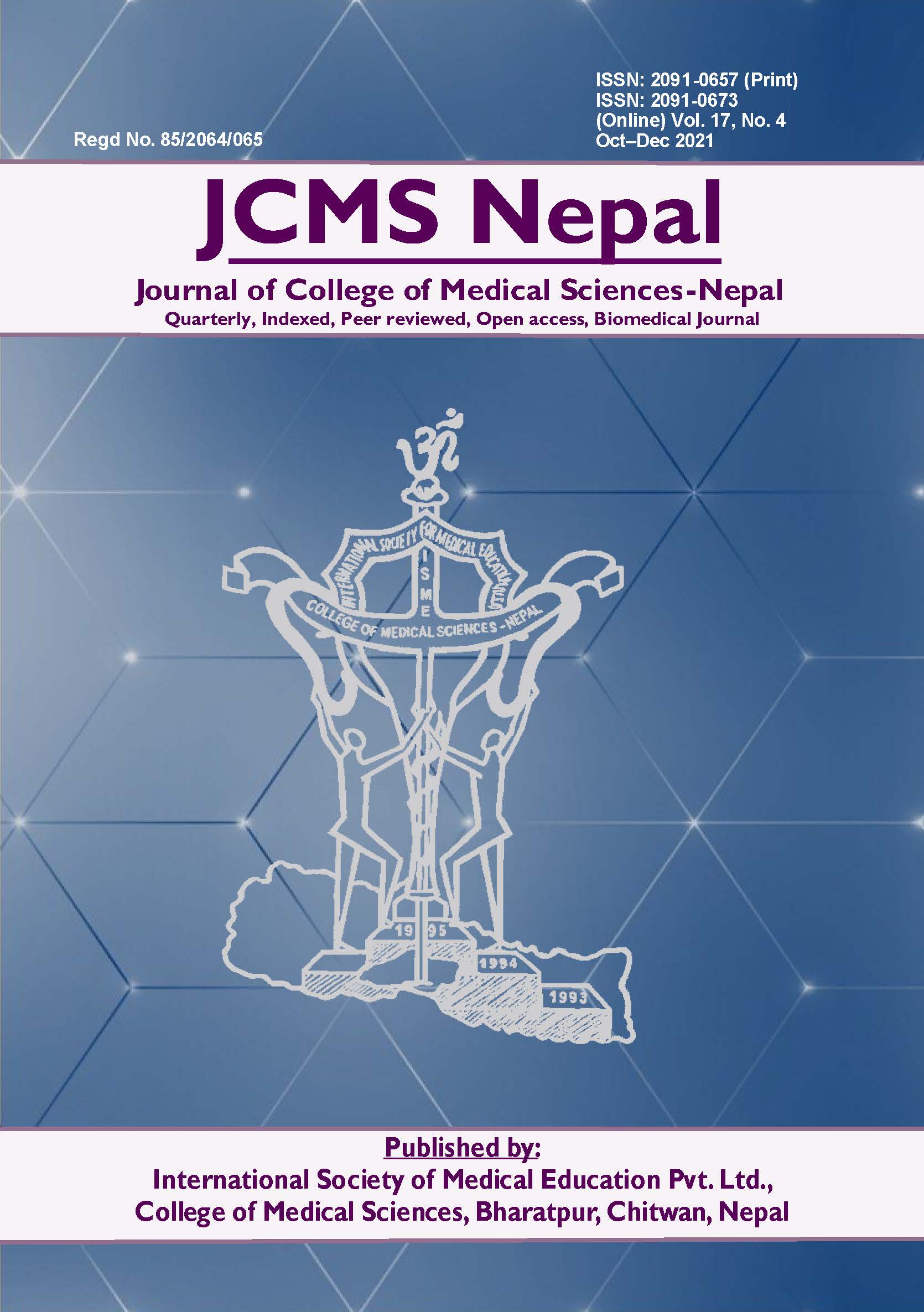Diagnostic Performance of CT Compared to PET/CT in Evaluating Bone Metastasis - An Initial Experience from Nepal
DOI:
https://doi.org/10.3126/jcmsn.v17i4.41032Keywords:
Bone metastasis, F-18 FDG PET/CT, Fluorodeoxyglucose F18Abstract
Introduction: Bone metastasis is frequently encountered in different cancers. Computed tomography (CT) is commonly used to detect bone metastasis. Positron emission tomography (PET) has only recently been introduced in Nepal. Various studies have shown PET/CT to be superior to CT alone in identifying bone metastasis. This study aims to compare the utility of CT scan compared to F-18 FDG PET/CT for detecting bone metastasis in common non-hematological malignancies.
Methods: The medical records of cancer patients referred to us between from September 2019 to April 2020 were reviewed retrospectively. Two radiologists and two nuclear medicine physicians read the CT and PET/CT scans respectively, performed as part of the same study. Results were categorized as positive, negative of equivocal. The sensitivity, specificity and accuracy of CT alone was evaluated compared to PET/CT.
Results: A total of 365 patients were included in the study. Out of 365 patients, bone metastasis was detected in 53 patients (14.5%). CT alone was true positive in 40 patients, true negative in 311 patients, false positive in 1 patient and false negative in 13 patients. (5 equivocal cases considered as negative). On per-patient analysis, CT alone when compared to PET/CT had sensitivity, specificity, and overall accuracy of 75.4%, 99.6% and 96.1% respectively for detection of bone metastasis.
Conclusions: Our study highlights that metabolic alteration in bone metastasis are identified by F-18 FDG PET/CT even before morphological changes are apparent on CT. Further, F-18 FDG PET/CT is extremely helpful if CT findings are equivocal for bone metastasis.
Downloads
Downloads
Published
How to Cite
Issue
Section
License
Copyright (c) 2021 Rajive Shahi, Sampanna Rayamajhi, Sagar Maharjan, Sujata Panta

This work is licensed under a Creative Commons Attribution-NonCommercial-NoDerivatives 4.0 International License.
This license enables reusers to copy and distribute the material in any medium or format in unadapted form only, for noncommercial purposes only, and only so long as attribution is given to the creator.




